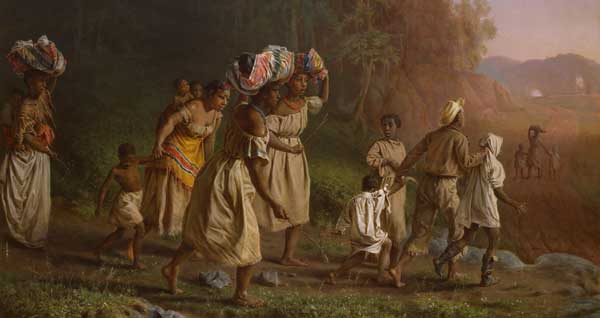
Gateway to Freedom: The Hidden History of the Underground Railroad, by Eric Foner, Norton, 320 pp., $26.95
No word has been more essential to Eric Foner’s distinguished career than freedom. His previous book, The Fiery Trial, was a Pulitzer Prize–winning examination of Lincoln and slavery. This time, in Gateway to Freedom, Foner recounts the stories of fugitive slaves and those who aided them on the journey to freedom via the Underground Railroad, a term popularized in the early 1840s that quickly entered the national consciousness. Foner bores into the historical record and offers a penetrating study of what he aptly calls the “hidden history” of the secret networks that helped transport and shelter slaves.
In 1845, America’s most famous fugitive, Frederick Douglass, refused to divulge the details of how he had escaped, and for good reason. Patrols roamed seaports and stations. Recapture, he wrote in his Narrative, “would seal my fate as a slave forever.” Douglass would not jeopardize the chances of others. Only later did he reveal how, by ferry and train, he had made his way from Baltimore to Wilmington to Philadelphia to New York, where he finally arrived in September 1838 and found refuge with David Ruggles, an abolitionist committed to assisting runaway slaves.
Foner tells Ruggles’s story, along with those of a score of other New York State activists, many of them all but forgotten. To fugitives, Manhattan and Brooklyn posed opportunity and risk. On July 4, 1827, New York freed its 3,000 remaining slaves, leading to the emergence of a vibrant free black community of some 14,000 people. Even so, New York City was tethered to the slaveholding South. Bankers and merchants profited from commerce with southerners, and many New Yorkers despised abolitionists more than they were troubled by slavery. The city remained so dangerous for fugitive slaves that Douglass himself fled to safer environs in New Bedford, Massachusetts.
Ruggles is a central figure in the early history of the Underground Railroad. A free black born in Connecticut, he went to New York at age 15 and worked as a mariner and grocer before devoting himself to abolition. In 1835, he helped create the Committee of Vigilance for the Protection of the People of Color, designed to shield free blacks and fugitives from being kidnapped and returned to slavery. It provided what Ruggles called “practical abolition”: measures taken to offer coordinated assistance to runaway slaves. By 1840, the Vigilance Committee claimed to have aided more than 800 fugitives. Foner shows how its activities led to the creation of a “broader infrastructure … a network of local individuals and groups, in frequent contact with one another, committed to assisting fugitive slaves.”
In ill health, Ruggles left New York in 1842, but many activists and several competing committees continued his work. No individual was more involved than Sydney Howard Gay, editor of the National Anti-Slavery Standard. The 1850s were an especially dangerous time for runaways. The Fugitive Slave Act empowered federal marshals to recapture them, and various vigilance committees worked to fight rendition. Gay’s manuscript, “Record of Fugitives,” an account of runaways who passed through New York (Foner calls it a “treasure trove”), reveals the hidden workings of the Underground Railroad.
Of more than 200 fugitives helped by Gay and a network of agents throughout the region, nearly half came from Maryland and Delaware, slave states bordering Pennsylvania’s freedom line. Most runaways were in their 20s and worked as farm laborers, domestics, or skilled craftsmen. Contrary to the stereotype of the solitary fugitive, many of these men and women ran away in groups. They fled because they were physically abused, feared being sold to the lower South, and simply because, as Gay wrote of one runaway, “he wanted to be free … and has wished to be for years.”
The outbreak of the Civil War brought the Underground Railroad to a halt, as thousands of slaves openly delivered themselves to freedom and helped transform the conflict into a war to abolish slavery.
Gateway to Freedom displays exhaustive research and astute analysis—the hallmarks of all of Foner’s work. One wishes at times that he had broadened the perspective by discussing literary and visual representations of the Underground Railroad, whether Eliza’s escape in Uncle Tom’s Cabin or Eastman Johnson’s painting A Ride for Liberty—The Fugitive Slaves, which graces the book’s cover. Examining the ways in which people encountered runaways in literature and art would deepen our understanding of how hundreds of everyday Americans, in anonymous acts of heroism, helped thousands of fugitives navigate their way to freedom.

